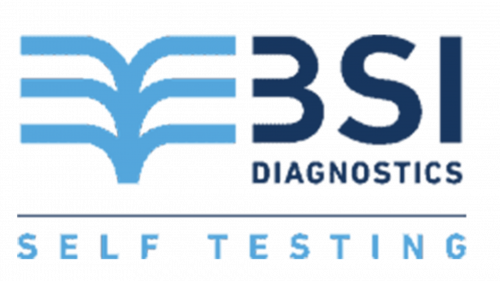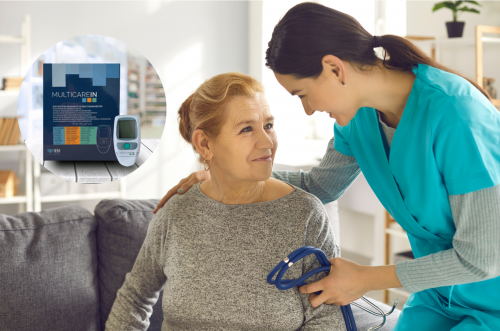MENARI “MEraba denyut NAdi sendiRI” is a campaign created by the Indonesian Ministry of Health which aims to detect heart rhythm disorders early.
Feeling the pulse (pulse pressure) is one of the oldest medical inspections. Healers from Ancient Egypt 3000 BC believed that a weak pulse is a sign of an illness or worsening of a previous illness. The pulse rate (measured by fingering) is now one of the 5 vital signs of humans; in addition to consciousness, respiratory rate, blood pressure, and temperature. The pulse will always be palpated by doctors and nurses as a basic checkup.
A pulse rate of more than 100 beats per minute has been shown to be a poor predictor of the number of hospital admissions. In fact, a healthy human who has a pulse rate of more than 100 beats / per minute also has a risk of having a heart attack in the future. Of course, the pulse is measured in a state of calm and rest. Also in a stable emotional mood.
How to measure the right pulse
Usually, the pulse is palpated on the wrist. However, in the unconscious victim, the main pulse can be found in the neck. Several other arteries that can be palpated manually include:
- Wrist on the side adjacent to the thumb
- Side of the neck
- Groin
- Fold of elbow
- Slightly above the heel of the foot
- The dorsal surface of the foot
Feel the wrist with the fingertips of the other hand. Feeling the left or right pulse is the same, however, it is better to measure both sides. The exact location is on the side of the thumb. Do not be too strong or too weak in pressing the pulse. After feeling the pulse, steady your touch and start counting. The pulse rate should ideally be counted in 60 seconds. It can also be measured in 30 seconds and then the result is multiplied by 2. A 15-second measurement where the result is multiplied by 4 is not recommended.
Not just the frequency, you can also feel the quality of the pulse: its strength, regular rhythm or not, and whether it is equal to the pulse on the other side. Comparison of the left and right sides should only be done on the same pulse. Don't compare the pulse at the wrist to the pulse at the elbow. Of course, the results are different!
For the medical professionals themselves, this technique of palpating the pulse is a skill that is not easy and must be continuously practiced. You can also practice by feeling the pulse more often.
The normal pulse rate is 60-100 beats/minute with a regular rhythm. Less than 60 beats/minute is called bradycardia. More than 100 beats/minute is called tachycardia. The pulse rate (usually tachycardia) is strongly influenced by many external factors: stress, emotions, recent physical activity, or medications. The message is to be careful in interpreting this pulse rate result.
Some diseases that can be detected by palpating the pulse:
- Weak or non-palpable radial pulse — shock, lack of fluids, weak heart contractions
- Irregular radial pulse — heart rhythm disturbances
- Unpalpable carotid pulse (10 seconds) — cardiac arrest
There are diseases that can cause heart failure
-
- Coronary artery disease
This heart disease arises due to a blockage (plaque) that blocks the blood vessels of the heart, so that blood flow to the heart becomes not smooth. As a result, the heart muscle will be damaged due to a lack of oxygen supply, so the heart cannot pump blood properly. This is what makes people with coronary heart disease at risk for heart failure.
2. Diabetes
Diabetics have a higher risk for heart failure. This risk will be even greater if the blood sugar levels of people with diabetes are not controlled or tend to be high. Diabetes can cause damage to the blood vessels of the heart and kidneys, so that heart function is disrupted over time. Another reason is that high blood sugar makes the blood thick and thick, so the heart has to work extra to pump blood throughout the body. These things put diabetics at risk for heart failure.
3. Hypertension
When the pressure in the blood vessels is too high, the heart needs to work harder to pump blood so that its supply to all organs of the body is met. If high blood pressure is not treated, the heart muscle will work harder to pump blood. If the workload of the heart is excessive due to having to pump blood more strongly, over time the heart muscle can become stiffer so that the ability of the heart to pump blood will be disrupted.
4. Arrhythmia
Arrhythmia is a condition when the heart rhythm is abnormal, either too fast, too slow, or irregular. When the heart rhythm is abnormal, this condition will interfere with overall heart function, including the heart's ability to pump blood.
To prevent or overcome the disease so that it does not occur or does not get worse, efforts can be made to monitor several body conditions including blood sugar, blood pressure and cholesterol, and blood fats (triglycerides).
For monitoring blood sugar, cholesterol and triglycerides PT Isotekindo Intertama has a special product, namely MULTICAREIN Meter 3 in 1 Blood Glucose, Cholesterol, and Triglycerides. MULTICAREIN Meter 3 in 1 Blood Glucose, Cholesterol, and Triglycerides offer a quick and easy way to test for glucose, cholesterol, and triglycerides in the blood using test strips.
There are features and benefits of the MULTICAREIN Meter 3 in 1 Blood Glucose, Cholesterol, and Triglycerides:
- Short time testing MULTICAREIN Meter 3 in 1 Blood Glucose, Cholesterol, and Triglycerides it only takes 5 seconds for the glucose test and 20 seconds for the Cholesterol and Triglycerides test, so the testing time is efficient
- 3 in 1 parameter: Inspection costs are cheaper & practical directly for 3 tests using MULTICAREIN Meter 3 in 1 Blood Glucose, Cholesterol, and Triglycerides
- Up to 500 data memory, MULTICAREIN Meter 3 in 1 Blood Glucose, Cholesterol, and Triglycerides have a large memory capacity making it easy to validate the previous test results
- MULTICAREIN Meter 3 in 1 Blood Glucose, Cholesterol, and Triglycerides Equipped with a test strip ejector, Safe to use, there is no need to pull the test strip
- Customizable, The device can be used by men & women are equipped with a correction factor so that the measurement results are accurate using MULTICAREIN Meter 3 in 1 Blood Glucose, Cholesterol, and Triglycerides
Altered blood parameters such as high blood glucose, high serum cholesterol, and high serum triglycerides may define a clinical condition known as METABOLIC SYNDROME which can increase CARDIOVASCULAR RISK.
Reference:
- American Heart Association (2021). Pulmonary Hypertension and CHD
- Health Compas Perabaan Nadi Nasional 2013
- Insert Pack MULTICAREIN Meter 3 in 1 Blood Glucose, Cholesterol, and Triglycerides
- National Institutes of Health (2021). National Heart, Lung, and Blood Institute. Heart Failure








